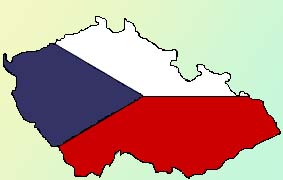Czech Republic's Southern Bohemia a region of culture and kayaking
 Prague - What is the name of the Czech Republic's biggest lake? The answer is the man-made Lake Lipno. The lake lies on the border to Austria, nestled between the rolling mountains of the southern Bohemian forest.
Prague - What is the name of the Czech Republic's biggest lake? The answer is the man-made Lake Lipno. The lake lies on the border to Austria, nestled between the rolling mountains of the southern Bohemian forest.
Since the fall of the Iron Curtain the South Bohemia Region has become very popular with tourist, especially with anglers and water sports enthusiasts from abroad. One angler managed to catch a 25 kilogram zander and with a little luck you can catch carp, pike, bass or catfish.
The lake is also popular with sailors because it is 42 kilometres long and eight wide, making it big enough for competitions.
But southern Bohemia has even more to offer and is a good spot to spend a few days. Many holidaymakers come here simply to sun themselves on its sandy beeches. If you are interested in a cycling tour you can ride around the lake but be prepared for some difficult climbs along the southern shore. However, the view is well worth the effort.
The southern shore also offers unspoiled nature and is linked to Austria's cycling path network.
The tourism heart of the region is Lipno. This one-time lumber industry town was moved to its present location with the building of the dam and the flooding of the reservoir between 1952 and 1960.
The nearby dam is the most upper part of a system of three dams that controls the river Vltava as far as Prague. But the force of nature remains unpredictable as residents found out in August 2002 when the capital was flooded.
According to an old legend the devil was bested by the river. He was bothered by the construction of Vyssi Brod monastery further down river and tried to build a dam to flood it with water from the Vltava.
The devil failed to finish building the dam by the third crow of the rooster, the churches' bells began to chime and the last block of granite to be placed in the dam's wall fell on his hands.
In reality the cliff face called The Devil's Wall overlooking the Vltava dates back to the Ice Age. Until the dam's construction the Vltava flowed through the valley and formed the Devil's Current, which inspired composer Bedrich Smetana to create his Moldau Symphony.
Vyssi Brod is best known in the Czech Republic for its Cistercian monastery and church. It was closed by the Communist authorities in 1950 but reopened in 1990.
Its library contains about 70,000 books and 205 handwritten parchment manuscripts. The monastery is the starting point for kayak tours on the Vltava.
"Experienced and well trained canoeists need a day to get as far as Cesky Krumlov. It takes between seven and nine hours and the route is 35 kilometres long," says camping site owner, Jiri Muehlbauer. Less experienced canoeists should complete the journey in stages.
If it was not for the colourful canoes on the Vltava, visitors would almost think they had travelled back in time when they arrive in Cesky Krumlov. The town is a UNESCO World Heritage Site and is overlooked by a fortress that is similar in scale to Prague's Hradcany castle.
"Krumlov is the pearl of Bohemia. It is only thanks to Prague's notoriously empty coffers that we have managed to hold on to it," says tour guide Stanislav Jungwirth. "There was no money to clean up the town."
The fall of communism 20 years ago came in time to save what remained of the old town from complete dereliction.
Today, most of the 400 historic houses have been restored to mint condition. A tour through the town is a walk through a labyrinth of narrow, cobble stone streets.
In the fisherman's district on the banks of the Vltava there are bars and with a little luck visitors can get a seat on the terrace to admire the view.
Large lime trees provide shade while in the background the Vltava can be heard crashing by and there's a view of the castle on the other side of the river. The most atmospheric time is in the evening when the castle is illuminated.
"There are about 40 buildings in the seven hectare large complex together with gardens. You need to be in good physical condition to see everything," says Jungwirth. The castle is thought to have about 365 separate rooms. The mask room in the west wing is a must see.
Another cultural highlight southern Bohemia has to offer is the town of Ceske Budejovice. The marketplace and its arcades are well worth a visit as well as the town hall and Samson fountain.
The town became world famous thanks to its beer. In a visitors' centre the history of beer brewing in Budejovice going back to the 13th century is retold. Every adult gets to try a glass of the town's most famous brew. (dpa)